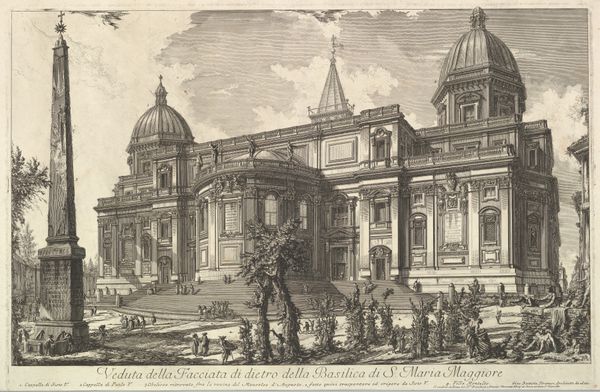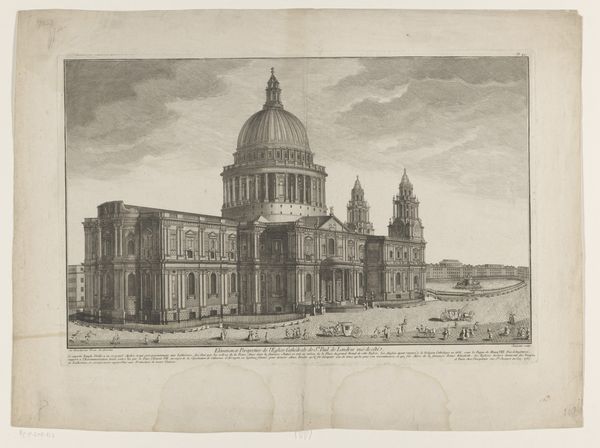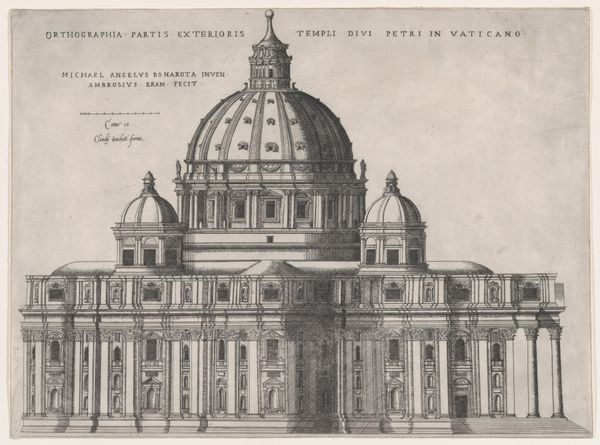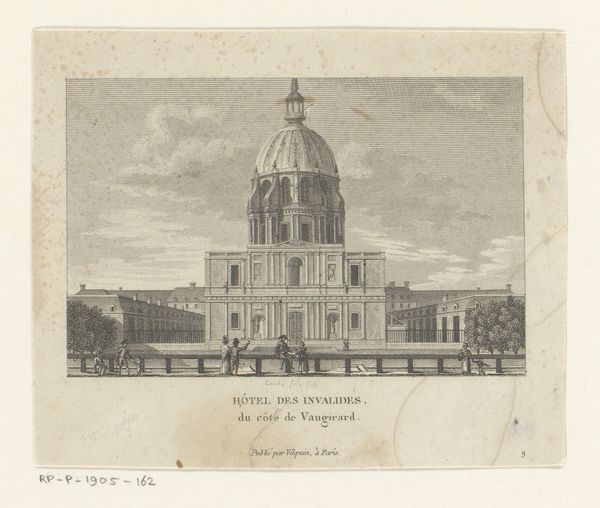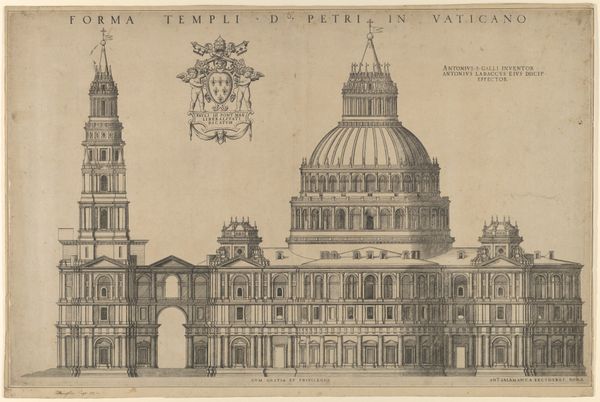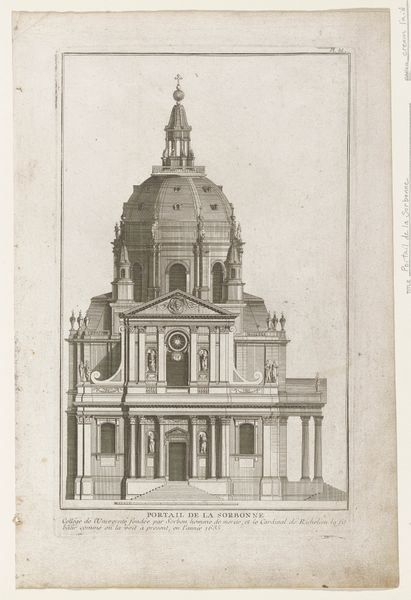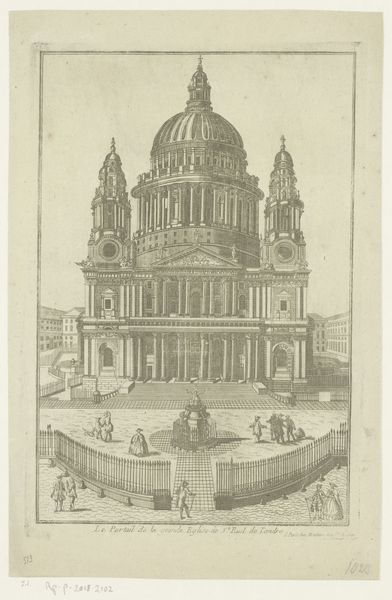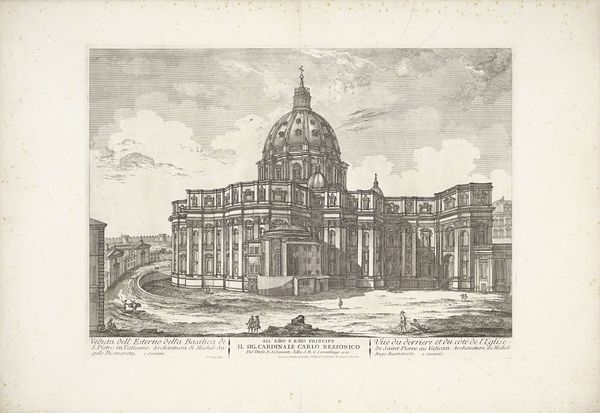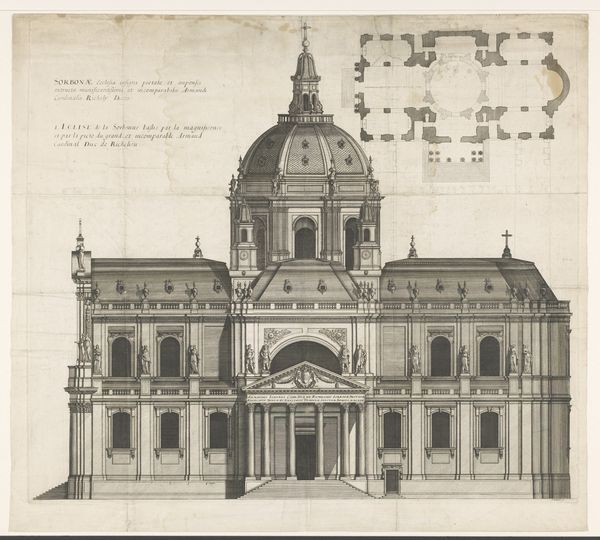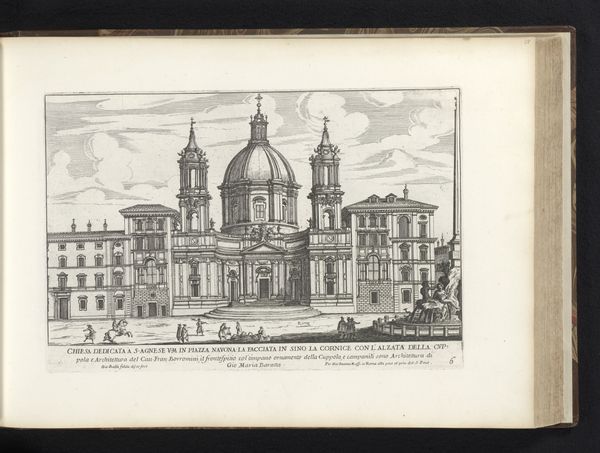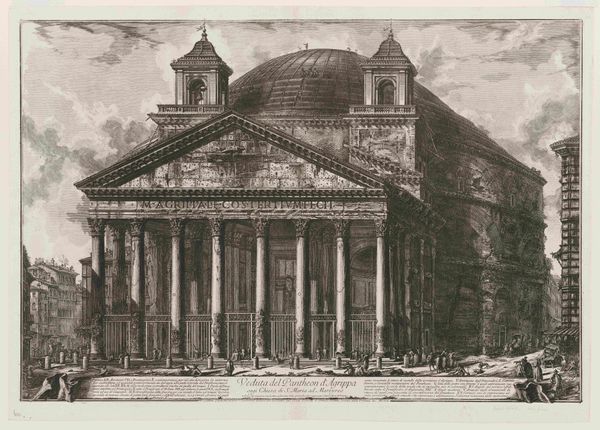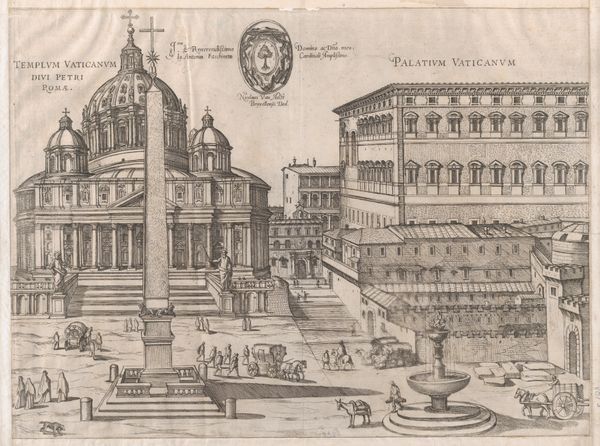
A Catalogue of the Churches of the City of London: Royal Palaces, Hospitals, and Publick Edifices, Built by Sr. Christopher Wren, Kt. Surveyor General of the Royal-Works, during Fifty Years: viz. from 1668 to 1718 1726
0:00
0:00
drawing, print, engraving, architecture
#
drawing
#
baroque
# print
#
england
#
arch
#
engraving
#
architecture
#
building
Dimensions: 24 13/16 x 20 1/4 x 1 1/2 in. (62.99 x 51.51 x 3.81 cm)
Copyright: Public Domain
Curator: I find the intense focus on the materials and methods employed in the construction of St. Paul's fascinating when viewing this engraving. Editor: This print from 1726, "A Catalogue of the Churches of the City of London: Royal Palaces, Hospitals, and Publick Edifices, Built by Sr. Christopher Wren," depicts Wren's design for St. Paul's. It's really precise and technical. What strikes you most about this particular view of it? Curator: Beyond its architectural significance, consider the labor embedded within the production of this print itself. Think of the engraver's skill, the tools they used, the printing process, the paper...each element contributes to the final product and reflects a specific historical mode of production. Where was this paper produced, what was the social class of the engraver? Editor: That's a good point; I was so focused on the building itself, I hadn't considered the print as a physical object with its own history. Curator: Exactly! It also prompts questions about accessibility. Who was this print intended for? Was it a tool for architects, a commemorative piece for the wealthy, or something else entirely? How does this differ from photographs of buildings today, where we can easily mass produce them? Editor: I suppose it speaks to a very different audience than it would today, likely a more limited and affluent one given the costs of commissioning and acquiring prints at that time. It was definitely a deliberate consumption of crafted art object as opposed to simply being an image. Curator: Precisely. By focusing on the materials and production processes, we move beyond admiring Wren's genius and engage with the social and economic conditions that shaped both the building and its representation. Editor: So, really, this isn’t just a picture of a building, but an artifact of its time, reflecting the resources and social structures needed to create and circulate such images. It really changes how I view not only the artwork portrayed, but also the print of the artwork! Thanks for that insightful lens.
Comments
No comments
Be the first to comment and join the conversation on the ultimate creative platform.
